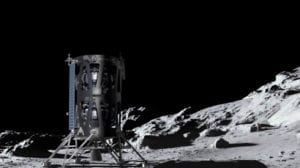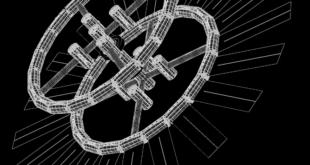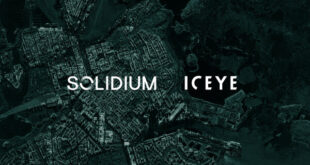
Intuitive Machines (IM) engineers have selected an area in Oceanus Procellarum near Vallis Schröteri as the landing site for its upcoming IM-1 lunar mission with an anticipated launch date in October 2021.
Vallis Schröteri, also known as Schröter’s Valley, is the largest valley on the Moon (comparable in size to the Grand Canyon) and is surrounded by Oceanus Procellarum, the largest lunar maria on the Moon. Oceanus Procellarum, also called the Ocean of Storms, covers over 10 percent of the entire Moon and has a diverse array of geological features. NASA considered a site near Vallis Schröteri for Apollo 18; now, IM is taking up the baton to conduct the initial survey.
Nova-C, the first lander wholly developed by a private company, will deliver commercial cargo and five NASA-provided payloads to the lunar surface. These payloads will conduct scientific research and technology demonstrations as part of NASA’s Commercial Lunar Payload Services (CLPS) program, in preparation for sending astronauts back to the Moon in 2024.
The Nova-C Flight Dynamics team considered every available detail within one degree of the 25N, 50W location to identify an ideal 200-meter landing site for the mission. The chosen landing site is flat, free of large craters and rocks, and has abundant sunlight throughout the 14-day lunar “day.”
“This kind of lunar landing assessment hasn’t been done since the 1972 Apollo mission,” said IM President and CEO, Steve Altemus. “The tremendous effort our team has put forth to fully characterize our descent approach, landing site options and lighting conditions to ensure mission success is a paramount task required to fulfill our obligation to our private payload customers
and NASA.”
“Our Flight Dynamics team really outdid themselves evaluating trajectories and landing conditions during each launch window,” said IM Vice President of Research and Development, Dr. Tim Crain. “They managed to design this landing site that is supported across our primary and secondary four-day launch windows. No one in Houston has looked as seriously at landing sites for a funded lunar landing mission in almost 50 years.”
The site is very interesting from a scientific perspective. Like other sinuous rilles (valleys), Vallis Schröteri is believed to have been formed by a collapsed lava tube from volcanic material that flowed from a crater (Cobra Head) located on the elevated Aristarchus Plateau into the low Oceanus Procellarum. In addition, the surrounding mare may include materials from the beginning of the Copernican Period (one billion years ago).
Nova-C will launch on a SpaceX Falcon 9 rocket from Pad 39A at the NASA Kennedy Space Center, the Apollo Saturn V launch pad. The launch is nominally scheduled for October 11, 2021 with multiple subsequent launch opportunities. This launch epoch allows for a near-optimal transfer with a 6-day transit from the Earth to the Moon and provides 14 days of sunlight at the target landing site after landing.
The IM1 mission will test an automated Precision Landing and Hazard Avoidance (PLHA) landing system, created by IM, paving the way for NASA astronauts to land on the lunar surface by 2024.
 SpaceWatch.Global An independent perspective on space
SpaceWatch.Global An independent perspective on space




